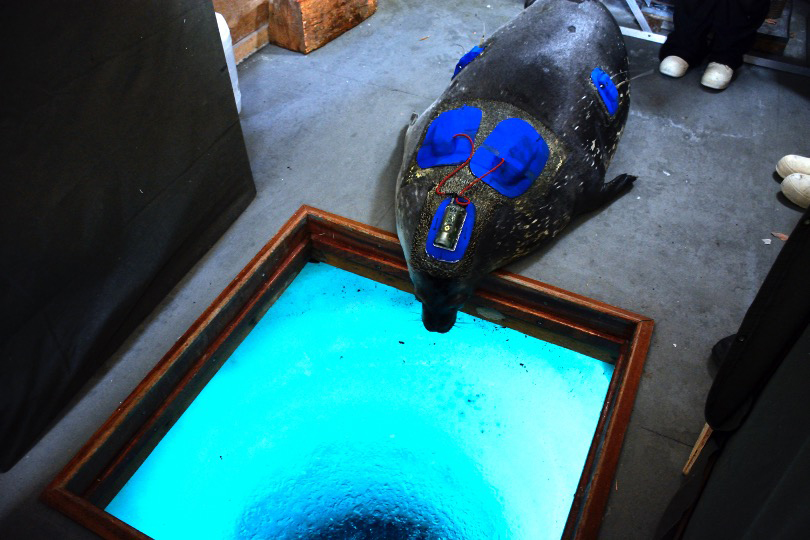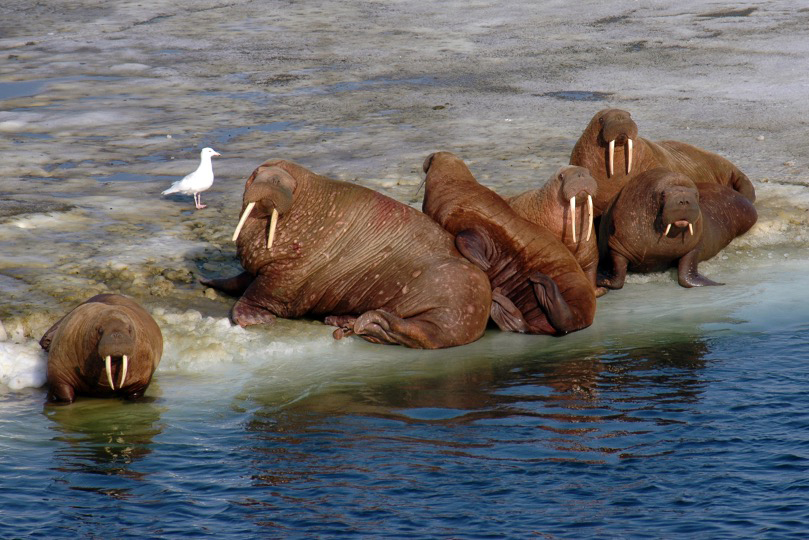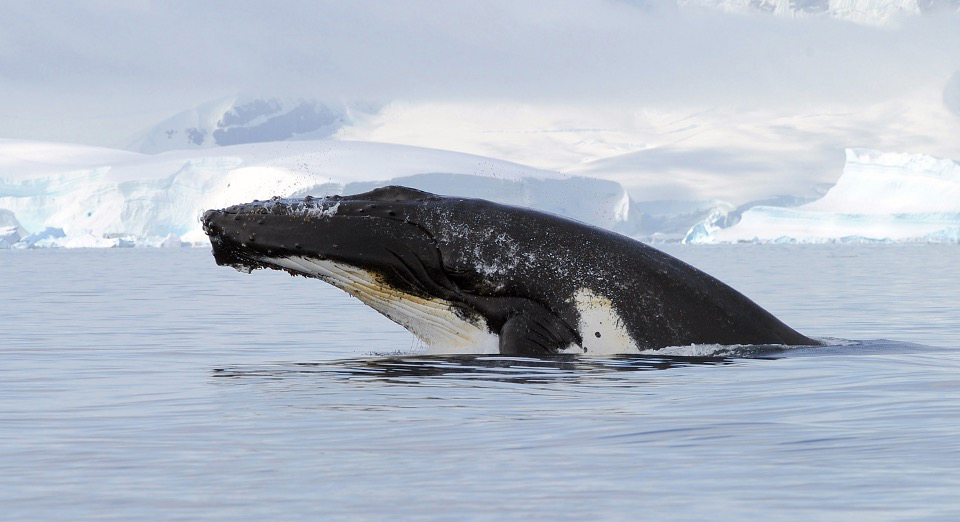|
Celebrating 49 Years of the Marine Mammal Protection Act National Science Foundation Posted October 21, 2021 
Photo Credit: Peter Rejcek
A newly instrumented Weddell seal with a Video and Data recorder enters a dive hole. The VDR is a specially designed video camera capable of recording of 27 hours of underwater activity. The instrument's array of sensors also records such properties as light, temperature and salinity. This image was collected under National Marine Fisheries Service permit #18691-00.
On this day in 1972, the Marine Mammal Protection Act (16 U.S.C. 1361), known informally as the MMPA, was passed by the Nixon Administration to address increasing public and scientific concerns about the effects human activities have on the health of marine mammal populations. By 1972, the modern environmental movement in the United States had taken root, and Americans had grown concerned about the impact that humans were having on the oceans and their inhabitants. Uniquely, the MMPA was the first legislation to mandate an ecosystem-based approach to marine resource management, meaning that not only were specific species managed and protected, but their environments as were well. The MMPA applies to all U.S. citizens and institutions. The law prohibits the taking and exploitation of any marine mammal without proper authorization from the U.S. government. The national agencies responsible for implementing the MMPA are the U.S. Fish and Wildlife Service (USFWS) and the National Marine Fisheries Service (NMFS). Scientists hoping to work with marine mammals must obtain authorization from NFMS to conduct their work. At NSF, we work closely with NMFS and other federal agencies to support marine mammal research around the world. 
Photo Credit: Karen Fry
NSF-funded research is exploring how disappearing sea ice impacts a significant element of the food web supporting female walruses and their dependent young. This image was collected under U.S. Fish and Wildlife Service permit #MA801652-3.
NSF is proud of its contribution to new and ongoing marine mammal science. During the 2020 fiscal year, NSF was responsible for supporting 11% of federally-funded marine mammal research projects, granting over $8.6 million to scientists working with these unique species. Over 90% of that funding came from NSF’s Office of Polar Programs (OPP) to support marine mammal research in the world’s polar regions. In Antarctica, scientists operating through the NSF-managed U.S. Antarctic Program (USAP) are studying a wide range of marine mammals, from Antarctic fur seals to humpback whales. USAP and NSF staff work with each of our investigators to obtain the appropriate approval for their research and to develop creative methods to limit the impact of their research on wildlife. Technological advances in the past decades have been instrumental in making this easier than ever. Today, scientists can use non-invasive skin tags to track seal feeding behavior, use drones to study population sizes and even take breath samples from whales! As the MMPA celebrates nearly half a century of marine mammal protection, we look forward to supporting marine mammal research around the globe. This story was contributed by Kimberly Ohnemus, 2021 Knauss Marine Policy Fellow, NSF Office of Polar Programs.
|



For USAP Participants |
For The Public |
For Researchers and EducatorsContact UsU.S. National Science FoundationOffice of Polar Programs Geosciences Directorate 2415 Eisenhower Avenue, Suite W7100 Alexandria, VA 22314 Sign up for the NSF Office of Polar Programs newsletter and events. Feedback Form |


